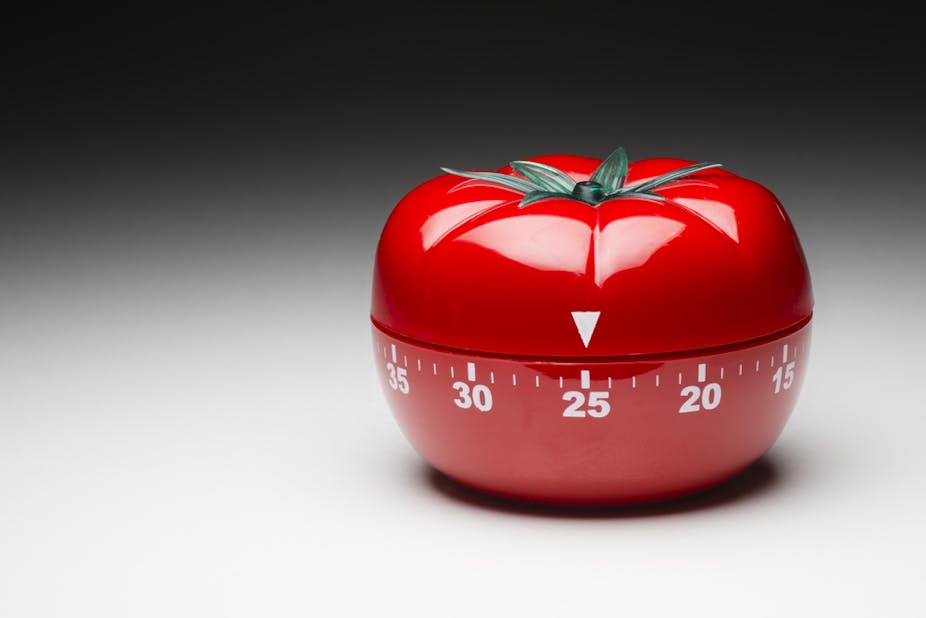We live in a distracted world. Our ability to focus on a single task or activity is dwindling, even though many people insist they’re good multi-taskers. Neuroscientist Earl Miller says these people are “deluding themselves”. All we are really doing is dividing our brain’s processing power between tasks as we switch from one to another. We are actually increasing the cognitive load on our brain.
Despite knowing all of this, I have checked my email at least ten times while writing this article. I’ve Googled references and then followed links down “interesting” rabbit holes. I’ve felt my phone buzz and checked to see what the message was.
Even though we are aware of how distractions affect our productivity, we still find it hard to resist them. One of the reasons is our addiction to dopamine, a chemical that functions as a neurotransmitter and makes us feel good when it is released. Every time we receive new information we are rewarded with a rush of dopamine to the brain.
But if the innovations of our digital age are largely to blame for our decreasing attention spans, don’t they also hold possible solutions? There are thousands of apps that suggest this is the case. Apple’s app store has an entire category dedicated to “productivity” apps.
But simply creating a digital version of a traditional tool is often not effective. What is needed are ways to encourage people to use the productivity tools and enjoy being focused and productive.
One of the areas I have been involved in researching is gamification. Gamification is applying game principles and mechanics, such as earning badges and using leaderboards, to encourage participation. A popular example of this is Kahoot! which gamifies quizzes through leaderboards, music and countdown timers.

Combining gamification with a focus routine is one potentially promising way of improving focus in our modern world. The principle has been built into a range of approaches (as well as apps) that help people break the cycle. I’ve used some, and my students have used some. They work.
The Pomodoro technique
Take the Pomodoro technique: named after a tomato-shaped kitchen timer, is based on the principle that even the largest building is constructed a brick at a time. Rather than being overawed by huge tasks, the idea is to commit to single small tasks which are achievable. It has significantly improved the productivity of my students, as well as my own.
The Pomodoro technique is based on what’s called a pomodoro: a 25-minute work period followed by a 5-minute break. After three or four “pomodoros” you take a longer break. The one essential element is that during a pomodoro you commit to focus entirely on the task at hand. That means no checking email or Whatsapp, and even resisting the urge to watch an ant walking across your desk. It takes a little bit of getting used to and the first few pomodoros are often littered with errant wandering thoughts demanding a dopamine fix.
However, you quickly learn that it’s actually easy to do this for just 25 minutes and before you know it you’ve done some really productive work which itself generates dopamine, reinforcing a new habit of focus.
And of course, there are digital versions. Pomodoro timers can be downloaded from several app stores.
Trees, tricks and risks
Research on gamification has shown that it can encourage learning. For example, I use gamified Kahoot! quizzes during my lessons to gauge student understanding. Students are excited to participate as they attempt to climb the leaderboard.
Gamification can also encourage increased levels of commitment and performance. For this reason more and more organisations are using it. In South Africa Discovery Health has successfully used it to encourage its members to exercise regularly and drive carefully in order to earn points and get rewards.

Google has also gamified the submission of employee expense claims, reportedly resulting in 100% compliance.
Gamification can also be used to help you focus. There’s Forest, an app that gamifies the Pomodoro approach by encouraging you to plant virtual trees. If you use your phone while the app is working, though, your tree dies. Seeing trees growing helps users to visualise their time and effort.
There’s even a group mode where multiple people commit to “focus” times. If any person in the group uses their phone, everyone’s trees die.
Elsewhere, in an attempt to address these issues, Apple’s soon to be released iOS 12 will include new distraction assisting tools and settings. These new features allow users to view phone usage activity reports, set time limits on app usage and schedule Do Not Disturb times when all notifications are muted.
My favourite high risk, high return focus app is The Most Dangerous Writing App. This app asks you to choose a time period – 3 or 5 minutes, or longer if you’re brave, and then click “Start Writing”. You’re presented with a blank screen and you begin writing. However, if you stop for just a couple of seconds you lose everything. Even my most distracted students are totally focused.

So, go ahead, plant your trees. Challenge yourself. Challenge your friends. Use whatever tools you can to make focusing a little easier. It’s a survival skill we all desperately need to sharpen in this digital age.
Author’s note: Well done if you read this entire article. You’ve just concentrated for approximately five minutes.


